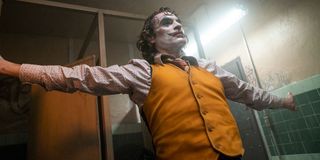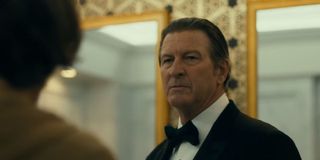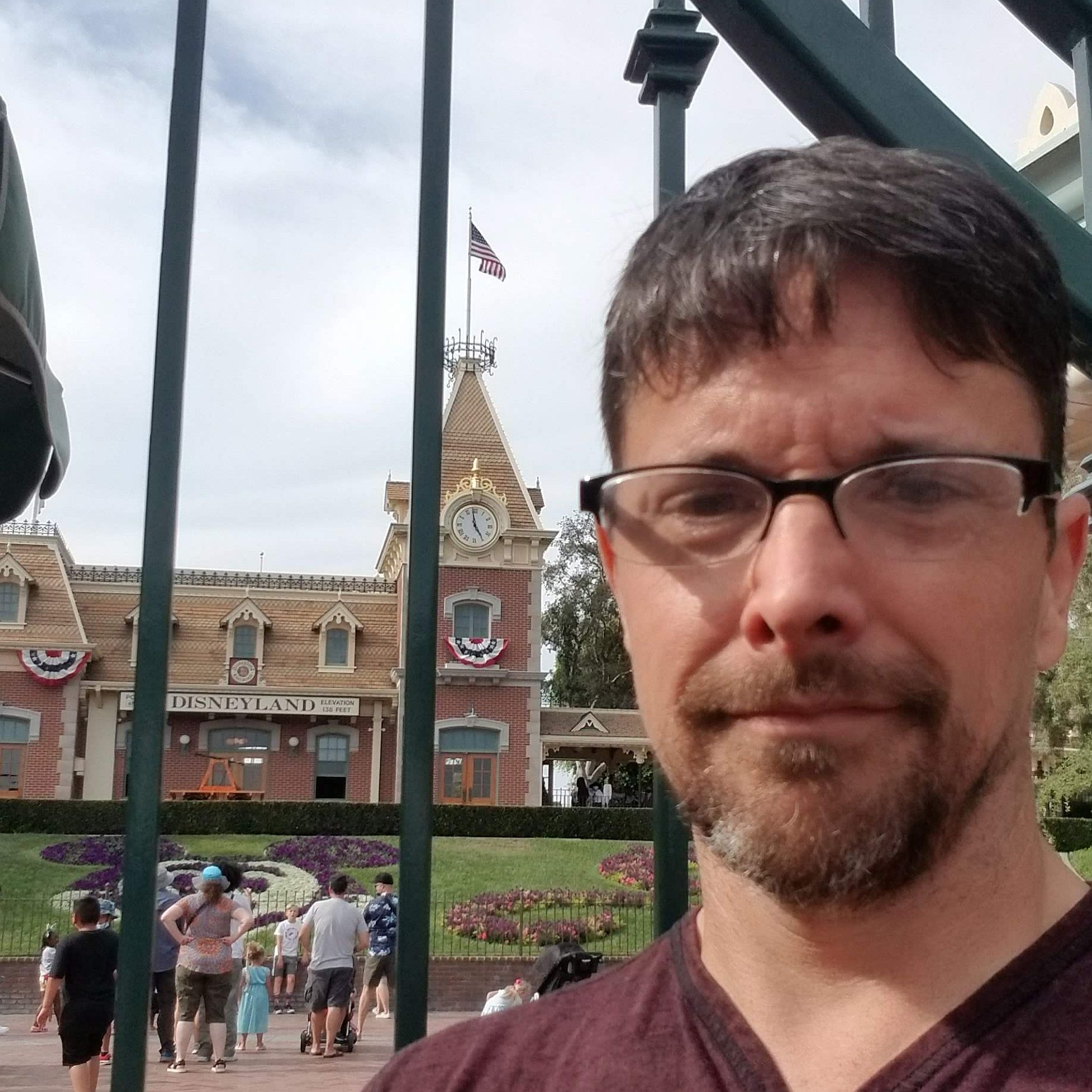Why Joker Really Shouldn't Have Included That Batman Tie-In Scene


The following contains SPOILERS for Joker. If you haven't seen it, go do that, then come tell me I'm wrong.
There's a lot to unpack about Joker. It's a story that depicts the origin of a comic book villain, but beyond a few details, it intentionally wants to make itself as little like a "comic book movie" as it can manage. It's a character study of a man dealing with a host of issues, mental illness apparently among them. If you filed the serial numbers off, there's nothing about this movie that requires it to be a Joker movie at all.
To be sure, Joker is as much an homage (or possibly a ripoff) of Martin Scorsese movies like Taxi Driver and The King of Comedy than it is to the work of Bob Kane, Bill Finger and Jerry Robinson, who created the Batman villain.
And that's ultimately my problem with the what happens at the end of Joker. The movie spends 90-minutes building to a crescendo that finally comes, with a literal bang, and then as we are in the middle of the insanity that spirals out from it, everything stops dead to give us the Batman origin story that we've all seen a dozen times, basically out of nowhere.
While my friend and colleague Eric Eisenberg wrote an interesting and compelling argument for why this scene was necessary, sitting in the theater watching the movie, I had exactly the opposite reaction. Why are we here? Why are we doing this?
The Movie Isn't About The Waynes
The Joker is, of course, one of the most popular comic book villains ever created, and the character is forever linked with Batman, so it's not at all shocking, or out of line, for the new Joker movie to take place in Gotham City rather than New York. Thomas Wayne is a major character in the film, and we also meet a young Bruce Wayne and a character who is obviously Alfred Pennyworth, though he's never named on the screen.
These things are all done in an organic way and the story that Joker tells us gives reasons for these moments to happen. But these characters are only important in the movie because of how they impact Arthur's story. The movie isn't about Thomas Wayne. The only time we see Thomas Wayne say anything that isn't part of a news broadcast is the one time that he and Arthur meet face-to-face.
CINEMABLEND NEWSLETTER
Your Daily Blend of Entertainment News
However, in the final minutes of Joker, while Arthur Fleck is laying on a police car hood unconscious, we get so much more. We see Thomas Wayne, his wife Martha and Bruce exiting a movie theater while a riot is going on in the streets. Fearing for their own safety, they leave down an alley, where one of the many Joker-mask wearing rioters sees them. He follows, shoots Thomas and Martha, and leaves young Bruce standing over their bodies.
It's understandable why a scene like this was put into Joker. You can't have Joker without Batman, right? Well, in this particular case, I think you can.
This movie might still be taking place within the DC Comics universe, but the story is about Joker; it's never about Batman. Joaquin Phoenix's character is at the center of the story. It's not quite told from a first person perspective, so we don't get an idea of what is actually going on inside Arthur's mind. That's intentional, but the entire movie is told from Arthur's point-of-view. The audience is never privy to any information that Arthur himself doesn't have.
That is, until the movie gets here. This is, I believe, the only scene in the entire movie that Arthur Fleck doesn't witness firsthand. We've been experiencing the whole film along with him, and now we stop doing that for a single moment to watch the Wayne murders happen. It's a jarring transition.
It Changes Nothing
It's also an unnecessary distraction. Joker had nothing to do with this moment directly. He didn't order the death of Thomas Wayne. The act was still a random act of violence, as it is traditionally presented, even if it was part of a larger riot brought about, largely inadvertently, by Joker. I suppose that when Arthur Fleck discovers that the man who might be his father is dead, it might mean something to him, but that never happens on screen.
It potentially gives a reason for Bruce Wayne, and thus the eventual Batman, to have a personal hatred for Joker in this version of Gotham City, but so what? There's zero indication we will ever see that story play out, so the scene has no real impact on the character of Joker. It's a set up for which there will not be, and should not be, any payoff.
The scene just feels out of place. From the moment you see the theater showing a Zorro movie and the Waynes exiting in fear, we all know what's going to happen. Even if you've never read a Batman comic book or even, somehow, haven't seen any of the previous films, Batman's origin is pretty well publicly understood by now. The origin of Batman is up there Dorthy dropping a house on a witch or Snow White biting into a poison apple. You'd be hard-pressed to find anybody who wasn't at least familiar with the events.
We all know what's going to happen. I could have gotten on board if we had only ever saw the Waynes exit the theater and rush down the alley, perhaps as a montage with other Gotham residents reacting in fear and terror at the riot taking place around them. It's a brief nod that everybody will still recognize, but it's one moment among many. Instead, we watch the whole thing play out in excruciating detail, right down to the shower of pearls falling from Martha's necklace. The audience is now thinking about Batman. They've stopped thinking about Joker.
I had some other issues with Joker, to be sure, but I largely found the movie engaging. As grim and depressing as the story was, I was willing to see where it went. I honestly thought that the movie was going to end with Joker in the back of that police car, but when that ambulance crash tells us the story isn't over, I was more curious than ever to see where it all went.
The Batman sequence killed that momentum dead for me. It completely shifts the focus of the story right when you know things are about to get interesting. Removing it would have changed nothing about the movie, and in the end, that's the signal that it was unnecessary. If a scene can be removed without impacting the story you're trying to tell, it probably should be.
If Thomas Wayne had been a more important character in the movie, if he'd had his own plot or character arc, then it would make sense to show how the character met his demise in the movie. If we were ever going to see these characters again, and this was part of a set-up for a sequel, it could be forgiven. Neither of these things is the case.
To be sure, we've seen Batman's origin on the big screen numerous times, but that's not the problem. The times when we've seen it before it has made sense. This time, it just did not.

CinemaBlend’s resident theme park junkie and amateur Disney historian, Dirk began writing for CinemaBlend as a freelancer in 2015 before joining the site full-time in 2018. He has previously held positions as a Staff Writer and Games Editor, but has more recently transformed his true passion into his job as the head of the site's Theme Park section. He has previously done freelance work for various gaming and technology sites. Prior to starting his second career as a writer he worked for 12 years in sales for various companies within the consumer electronics industry. He has a degree in political science from the University of California, Davis. Is an armchair Imagineer, Epcot Stan, Future Club 33 Member.
Most Popular


